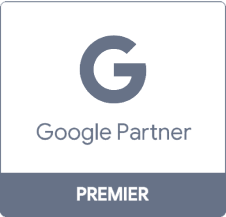- Home
- Web Development Learn
The Beginner’s Guide to Web Development
Does Your Site Need an SSL Certificate?
LearnDoes Your Site Need an SSL Certificate? There are many details to consider when building and managing a website for your company. And although some of them may seem minor – especially if you’re in a hurry to launch the […]
We’ll be highlighting the absolute basics of web development for any beginner, as well as revealing the magic behind how websites function and offering a comprehensive list of tools and resources for you to start learning web development online for free — thanks, Internet!
Understanding web development
Before we get into the thick of things, let’s cover some basic web development concepts.
In its simplest sense, web development is segmented into two areas — front-end and back-end. To get a better understanding of what roles front-end and back-end development play in the web development process, we need some basic knowledge of how websites, and the Internet as a whole, work.
How does the Internet work?
If you’ve ever wondered about the logistics that allow you to listen to music on Youtube while browsing Twitter and Amazon, you’re not alone—the Internet is a truly amazing place.
To put it broadly, the Internet is a very advanced way of sharing information, with the sharing process facilitated by machines (i.e., computers) rather than humans. Us humans are still asking a lot of the same questions we always have — “what’s the weather like today,” “how do I get from point a to point b,” “what’s happening in the news,” etc. — it’s just being transmitted differently and much more quickly than past forms of communication.
Networks are at the heart of what makes this information exchange possible. When you connect to the web, you do so via your Internet Service Provider’s (ISP) network. Any computer that accesses the Internet through an ISP is known as a client, which we can think of as similar to renting an apartment — you can live in the space you lease from your landlord as long as you pay rent, but as soon as you stop, you lose access to your apartment, because you don’t own it. You can’t access the Internet without a network connection, and becoming your own ISP isn’t easy or cost-effective.
But how does an ISP connect you to the internet? Simple. Once connected to your provider, they assign your computer (or any internet-capable device) an IP address associated with your device. This IP address allows your device to communicate with servers — super-powerful computers connected directly to the Internet for the purpose of storing information (webpages, sites, apps, files) to be accessed. Whether the information a server holds is accessible to the public or kept secure is determined by whether its IP address is public or private.
Basics of web development
With the Internet functionality crash course out of the way, we can dive into how websites come to life! Early on, we touched on front-end and back-end web development. With your new (or refreshed) knowledge of how the Internet works, the distinction between these two areas of web development will be much easier to understand.
What is front-end development?
Front-end web development is what goes into making a website appear as it does on your device, from each individual site page down to the font style and link color. The term “front-end” comes from its very nature — it’s the front-facing portion of the website that the vast majority of people see.
What is back-end development?
When it comes to the meaning of back-end web development, it’s about as straightforward as our definition for front-end development. The back-end of web development is focused primarily on the “back-end” of things, from relatively basic tasks like holding site files and media to much more complex duties like building applications to facilitate communication between servers and databases, as well as ensuring secure database storage for any information collected by the site.
How to learn web development
One of the many benefits of the Internet is the wealth of information available entirely for free, and web development is no exception. Whether you’re interested in learning front-end or back-end website development, there are plenty of great resources, a few of which we’ll touch on below.
But before you jump into an online course or purchase a textbook on learning a specific programming language, we highly recommend doing some exploring!
There’s a lot that goes into both front-end and back-end web development. One of the best tips we can give is to read more blogs, watch more Youtube videos, and ask around the Internet to get an idea of the best path for the big-picture motivation you have for learning web development.
Whether you want to learn website design and user experience best practices to create an engaging portfolio site or explore the best back-end languages to learn to develop and host your own video game online, you can find helpful web development resources online.
Free web development courses
If you’re learning web development as a beginner, you’re in luck. You can find various introductory courses on front-end and back-end web development, including related programming languages such as HTML, CSS, JavaScript, PHP, Python, and more, for free online.
W3Schools is one of (if not) the most comprehensive, entirely free web resources for learning coding and web development, featuring in-depth courses on HTML, CSS, JavaScript, and Bootstrap for those interested in front-end web development, and courses in C++, Python, PHP, Java and SQL for those interested in back-end development. Even more importantly, these courses are designed to introduce more advanced concepts gradually, making for some of the best web development courses for beginners!
In tandem with W3Schools, freeCodeCamp is an equally indispensable, entirely free coding and web development resource for beginners. While they have slightly fewer course offerings than W3School, their detail-oriented courses ensure a solid grounding in the fundamentals of web development.
Additionally, Codecademy, Udemy, edX, and DataCamp all offer a variety of free courses for you to start your learning experience. Codecademy offers one of the best beginner HTML and CSS courses for beginner front-end developers while also featuring more advanced courses for paid subscribers.
What you need to get started with web development
As far as the tools you’ll need to begin your web development adventures, there’s not an extensive list of paid software programs and applications necessary for you to get started. For beginner web developers, there’s not much more needed other than a computer, Internet connection, text editor, and though mainly for back-end web developers, your programming language(s) of choice.
For beginners, there are no hard and fast rules for computer specifications other than having a physical location for file storage, whether it be your computer’s hard drive or a flash drive.
Text editors are essentially the digital notepads in which you’ll be writing your code, and some of the best text editors for web development are entirely free. Text editors for front-end web development don’t require as many features as those for back-end. However, as you progress in your web development journey, you may become interested in experimenting with more feature-rich text editors. For both front-end and back-end web development, we’d recommend Brackets, Notepad++, Atom, and Visual Studio Code as the best text editors for beginners.
For back-end web development, the only additional step to get started is downloading a virtual machine or interpreter that can run the programming language of your choosing. Many of the most widely used programming languages for back-end development are open-source and offer interpreters that are free to download and use. Just be sure to download only from official sites of the languages themselves for your computer’s safety.
Get started learning web development today!
For more helpful tips on web development best practices and industry insights, sign up for WebFX emails today to receive updates on web development trends, strategies, and more in the world of digital marketing!
Related Resources
- How to Get Your Web Development Projects off to a Good Start
- How to Host a Website when You’re New to Website Hosting
- How to Make a Website Searchable in 14 Steps
- Interactive Websites: Your Birds-Eye-View [Examples, Features, & Tips]
- Sleek Interface Designs from DeviantART
- Social News Websites for Front-End Developers
- Speed Up Your Web Development Workflow with Grunt
- The 15 Most Popular Text Editors for Developers
- The 19 Best Newsletters for Front-End Web Developers
- Top 6 Internet Explorer Extensions for Web Developers
Marketing Tips for Niche Industries
- Industrial Website Design Examples
- Insurance Website Design Services
- Landscaping Website Design
- Law Firm Web Design: Get a Custom Website with SEO
- Medical Website Design from an Award Winning Agency
- Moving Company Website Design Services
- Pediatric Dental Websites: 5 Tips for Impactful Web Design
- Plumbing Website Designs
- Power of Success with PowerGistics and WebFX
- Top 10 Effective Web Design Tips for Auto Service Centers
Additional Reading
- 9 Benefits of Using Bootstrap for Landing Pages
- ADA Compliance Testing
- How to Fix Broken Links
- How to Make a Website Searchable in 14 Steps
- Interactive Websites: Your Birds-Eye-View [Examples, Features, & Tips]
- Landing Page Speed Test
- Shopify vs. WooCommerce
- The Difference Between a Mobile Site and a Responsive Site
- Top 5 Advantages of Magento
- Types of Website Security Threats and Tactics
- Website Security Measures
- Website Security Solutions: 9 Best Options for Your Company
- Why Does My Website Say 404: Page Not Found?
- Why is My Website Slow? (8 Causes and Fixes)
- WooCommerce Vs BigCommerce
Browse All of Our Web Development Resources











